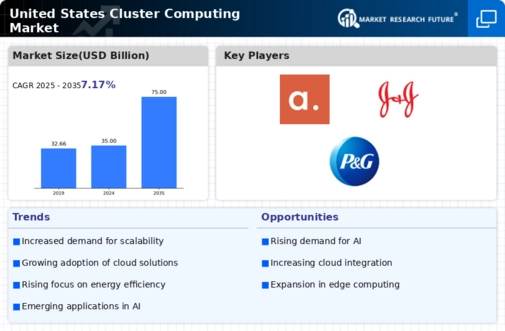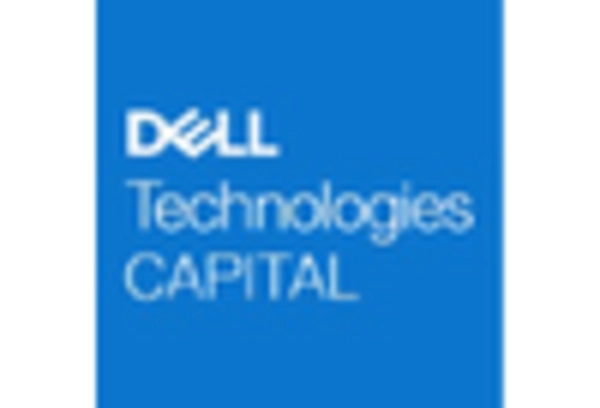Emergence of Edge Computing
The emergence of edge computing is reshaping the landscape of the cluster computing market. As organizations seek to process data closer to the source, the need for distributed computing solutions is becoming more pronounced. Edge computing allows for real-time data processing, which is essential for applications such as IoT and autonomous systems. The market for edge computing is projected to grow significantly, with estimates suggesting a CAGR of around 30% through 2025. This shift towards edge computing indicates a potential transformation in how data is processed and analyzed, leading to increased demand for cluster computing solutions that can support distributed architectures. As businesses adapt to this trend, the cluster computing market is likely to evolve, offering innovative solutions to meet the needs of edge computing.
Growing Cybersecurity Concerns
The cluster computing market is increasingly influenced by growing concerns surrounding cybersecurity. As organizations adopt more complex computing environments, the risk of cyber threats escalates. The cybersecurity market is expected to reach approximately $300 billion by 2024, highlighting the urgency for robust security measures. This trend suggests that businesses are prioritizing the protection of their data and computing resources, which may drive investments in secure cluster computing solutions. Organizations are likely to seek cluster computing systems that incorporate advanced security features to safeguard sensitive information. Consequently, the cluster computing market may experience growth as companies look to enhance their cybersecurity posture while leveraging the benefits of cluster computing.
Expansion of Big Data Analytics
The proliferation of big data is significantly influencing the cluster computing market. Organizations are increasingly adopting cluster computing solutions to manage and analyze large datasets effectively. The market for big data analytics is anticipated to reach approximately $274 billion by 2022, indicating a robust growth trajectory. This trend suggests that businesses are recognizing the value of data-driven insights, which necessitate powerful computing resources. Cluster computing provides the necessary infrastructure to process and analyze big data efficiently, thereby enhancing decision-making processes. As companies continue to invest in data analytics capabilities, the cluster computing market is likely to benefit from this expansion, as more organizations seek to harness the power of data for strategic initiatives.
Increased Focus on Research and Development
The cluster computing market is witnessing a heightened emphasis on research and development (R&D) across various sectors. Organizations are allocating substantial resources to R&D initiatives, particularly in fields such as pharmaceuticals, aerospace, and artificial intelligence. This focus on innovation necessitates robust computing capabilities, which cluster computing solutions can provide. The market for R&D in the US is projected to exceed $600 billion by 2025, reflecting a commitment to advancing technology and scientific discovery. As R&D activities intensify, the demand for cluster computing resources is expected to rise, enabling researchers to conduct complex simulations and analyses. Consequently, the cluster computing market is likely to experience growth driven by the increasing need for advanced computing solutions in R&D environments.
Rising Demand for High-Performance Computing
The cluster computing market is experiencing a notable surge in demand for high-performance computing (HPC) solutions. Industries such as finance, healthcare, and scientific research are increasingly relying on HPC to process vast amounts of data efficiently. According to recent estimates, the HPC segment is projected to grow at a CAGR of approximately 8.5% through 2026. This growth is driven by the need for faster data processing and analysis, enabling organizations to make informed decisions swiftly. As a result, the cluster computing market is likely to expand, with more businesses investing in advanced computing clusters to enhance their operational capabilities. The integration of HPC into various sectors is expected to further propel the cluster computing market, as organizations seek to leverage technology for competitive advantage.

















Leave a Comment